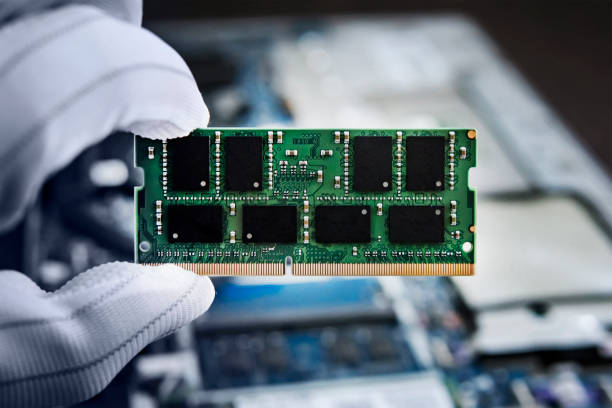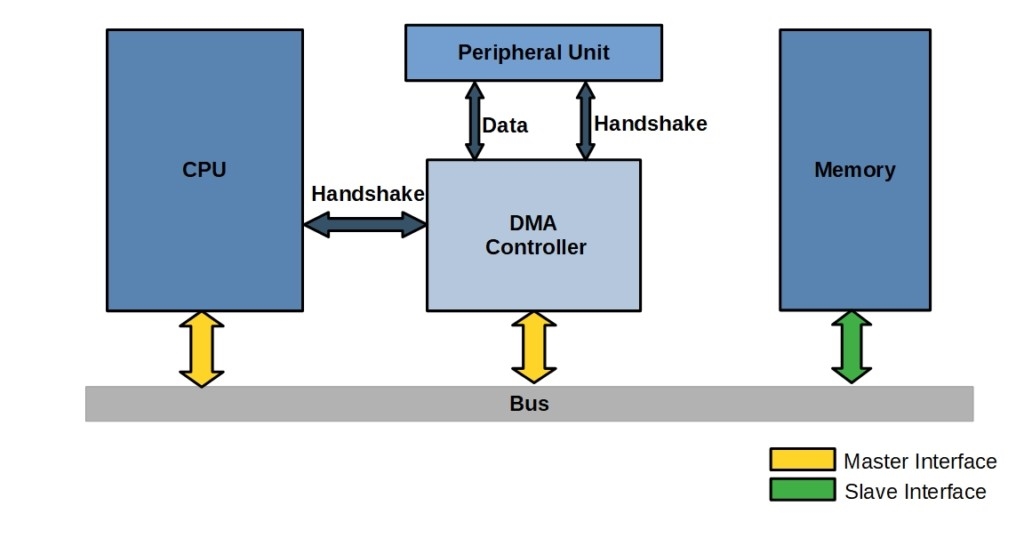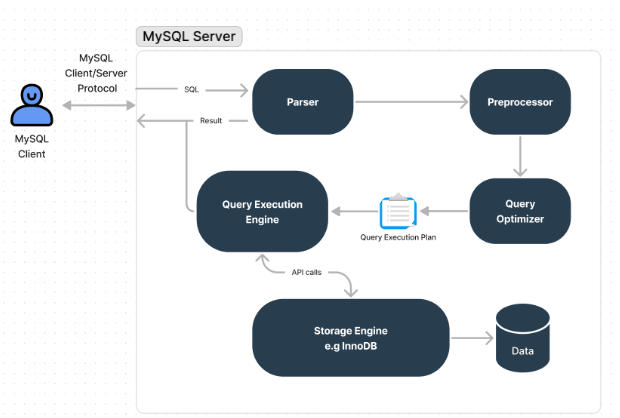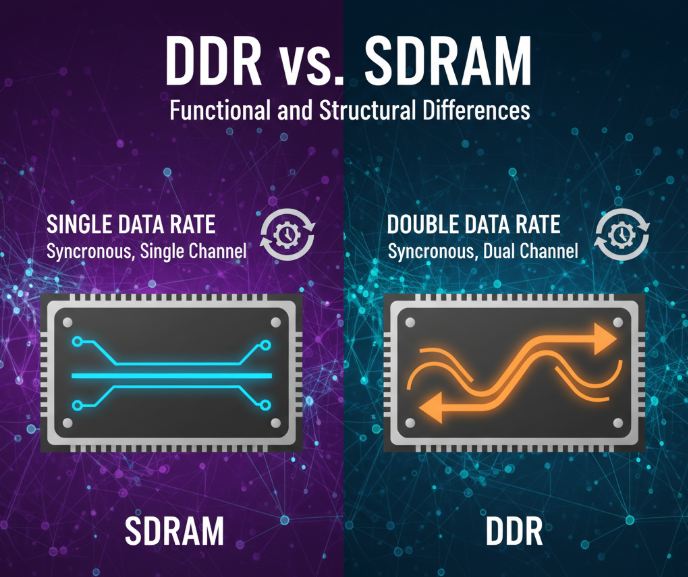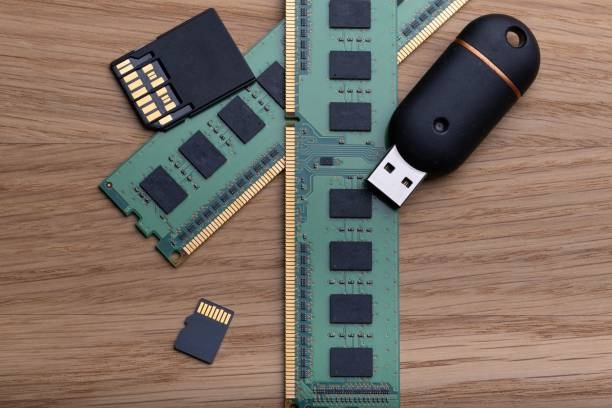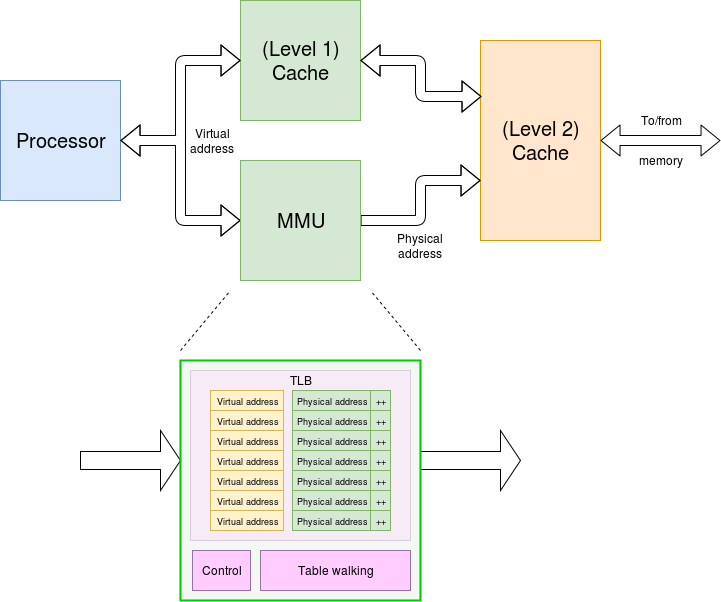1. DDR in the memory classification
Below is the position of DDR in the memory classification:
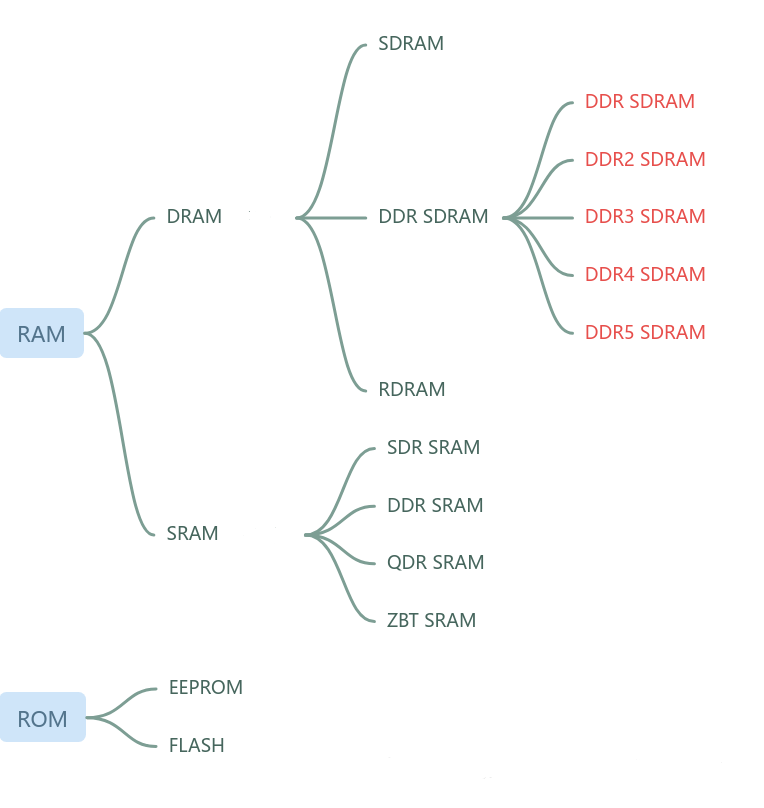
2. Main differences between DDRx SDRAM and SDRAM
| DDRx SDRAM | SDRAM | |
|---|---|---|
| Data transfer rate | Uses double data rate by transmitting data on both the rising and falling edges of each clock cycle, so its data transfer rate is roughly twice that of SDRAM | Transmits data on either the rising or falling edge of the clock, so it transfers data once per clock cycle and has a lower data transfer rate |
| Clock frequency | Operates with double data rate (DDR) signaling, effectively doubling the data rate relative to the SDRAM clock | Operating frequency is typically expressed in MHz |
| Data prefetch | Supports larger prefetch (commonly two data units), improving data transfer efficiency | Typically uses a single-data prefetch, i.e., one data per access |
| Bandwidth | Higher bandwidth due to double data rate and higher effective clocking | Relatively lower bandwidth |
| Internal architecture | Data transfer on both rising and falling clock edges enables higher transfer rates at the same clock frequency | Data transfers occur on a single clock edge (rising or falling) |
3. Core technical points of DDR memory
- Double Data Rate: DDR transfers data on both the rising and falling edges of the clock cycle, achieving double data rate and improving transfer efficiency.
- Internal parallelism: DDR increases internal parallelism to improve throughput, including transmitting multiple data blocks per clock cycle to better utilize memory bandwidth.
- Prefetch technology: Prefetching loads likely-to-be-accessed data in advance to reduce access latency and optimize memory performance for predictable access patterns.
- High-density integrated circuit design: DDR typically uses highly integrated circuit designs to accommodate more storage cells and increase capacity, which is important for systems requiring large memory.
- High clock frequencies: High clock frequencies are key to achieving high bandwidth. Raising the clock frequency increases data transfer rates and enables faster memory access.
- High-bandwidth bus: DDR increases bus width to raise bandwidth. A wider data bus allows more data to be transferred per clock cycle.
- Low-power design: Low-power features are increasingly important for mobile and portable devices. DDR standards include low-power modes to reduce consumption when needed.
- Advanced timing control: DDR supports complex timing control to maintain stable performance across different access modes and frequencies.
These technical points have driven DDR development, making it a main memory standard in modern computing. Different DDR versions vary in how they implement these features, but they all aim to provide high performance, high bandwidth, and low latency.
4. Problems caused by using substandard DDR
- System instability: Substandard DDR can cause system instability, including operating system crashes, application crashes, and random reboots, due to memory access errors, transmission errors, or timing mismatches.
- Performance degradation: Substandard DDR may not operate at its rated frequency and timings, reducing system performance and preventing full use of memory bandwidth.
- Data loss or corruption: Memory errors can corrupt data during transfer or storage, which is critical for applications with high data integrity requirements.
- Blue screens or freezes: Faulty DDR can cause blue screens (in Windows) or system freezes and crashes due to memory faults.
- Incompatibility: Different models, brands, or specifications of DDR may be incompatible and fail to work together in the same system, including mismatched channels or capacities.
- Hardware damage: In extreme cases, substandard DDR can damage other hardware components. While rare, this risk exists.
5. Role of DDR in embedded devices
In embedded systems, DDR (Double Data Rate) memory plays an important role in supporting device operation and performance. Key roles include:
- Program storage: DDR stores the embedded operating system, application program code, and other software needed to run the device, providing temporary storage for dynamic loading and execution.
- Data storage: DDR stores runtime temporary data such as sensor data, user input, and device state, which require fast read/write access.
- Cache: Part of DDR can be used as cache to speed access to frequently used data and improve performance.
- Graphics and multimedia processing: For embedded devices that handle graphics and multimedia, DDR's high bandwidth and fast access are critical for storing images, audio, and video content.
- Firmware updates: DDR may store firmware or firmware update data, allowing devices to update functions, fix bugs, or add features.
- Real-time operations: In real-time systems, DDR may store code and data for real-time tasks to ensure timely responses to events.
- Temporary storage: Embedded devices often have limited persistent storage; DDR provides relatively large temporary storage for transient data needs.
- Runtime configuration: Configuration data and parameters stored in DDR are used for device initialization and runtime configuration to ensure proper behavior under different operating conditions.
- Power management: DDR low-power features are important in embedded systems. Low-power design helps extend battery life in devices that run for long periods on battery power.
 ALLPCB
ALLPCB


